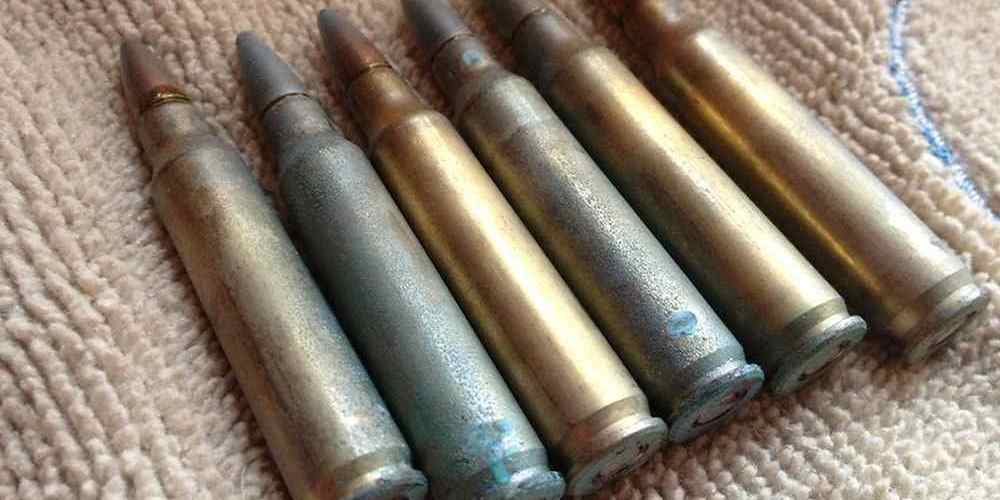“Deciphering the Differences: Choosing the Right AR15 Caliber for Your Needs”
The Difference Between 5.56 and .223 Calibers
When it comes to AR15 calibers, there can be some confusion surrounding the differences between 5.56 and .223. While these two calibers may seem similar, there are some key distinctions that shooters should be aware of. Understanding these differences can help you make informed decisions when it comes to selecting ammunition for your AR15.
The first thing to note is that while 5.56 and .223 cartridges may look similar, they are not interchangeable. The 5.56 cartridge has a higher pressure rating than the .223 cartridge, which means that it can generate higher velocities and muzzle energies. This higher pressure rating is due to the fact that the 5.56 cartridge was originally designed for military use, where reliability and performance under harsh conditions are paramount.
On the other hand, the .223 cartridge is a civilian round that is designed to be used in sporting rifles. While the .223 cartridge is similar to the 5.56 in terms of dimensions, it has a lower pressure rating. This means that using 5.56 ammunition in a rifle chambered for .223 can potentially lead to dangerous overpressure situations.
Another key difference between the 5.56 and .223 calibers is the chamber dimensions of the rifles that they are designed for. While rifles chambered for .223 can safely shoot both .223 and 5.56 ammunition, rifles chambered for 5.56 should only shoot 5.56 ammunition. This is because the larger chamber dimensions of a 5.56 rifle can accommodate the higher pressures generated by 5.56 ammunition, but may not be able to safely handle the lower pressures of .223 ammunition.
In addition to 5.56 and .223, there are also alternative calibers that can be used in AR15 rifles. One popular alternative is the .300 Blackout caliber, which was designed to provide improved performance in short-barreled rifles. The .300 Blackout cartridge is capable of delivering similar ballistics to the 5.56 cartridge, but with a larger bullet diameter and heavier bullet weight.
Another alternative caliber is the 6.5 Grendel, which was designed to provide long-range performance in AR15 rifles. The 6.5 Grendel cartridge features a high ballistic coefficient and excellent long-range accuracy, making it a popular choice for precision shooters.
Ultimately, the choice of caliber for your AR15 rifle will depend on your intended use and personal preferences. If you are looking for a versatile cartridge that is widely available and affordable, the 5.56 caliber may be the best choice for you. However, if you are looking for improved performance in specific areas such as short-range or long-range shooting, you may want to consider alternative calibers such as .300 Blackout or 6.5 Grendel.
In conclusion, understanding the differences between 5.56 and .223 calibers, as well as alternative calibers, is important for making informed decisions when it comes to selecting ammunition for your AR15 rifle. By considering factors such as pressure ratings, chamber dimensions, and intended use, you can choose the caliber that best suits your needs and preferences.

Pros and Cons of Using 5.56 vs .223 in an AR15
When it comes to choosing the right caliber for your AR15, there are a few key factors to consider. The most common calibers for AR15 rifles are 5.56 and .223, but there are also alternative calibers available. In this article, we will explore the pros and cons of using 5.56 vs .223 in an AR15, as well as some alternative calibers to consider.
Let’s start by looking at the 5.56 caliber. The 5.56 round is the standard caliber for military rifles, and it is known for its high velocity and flat trajectory. This makes it an excellent choice for long-range shooting and hunting. The 5.56 round also has a higher muzzle energy than the .223 round, which can result in better terminal ballistics.
However, there are some drawbacks to using the 5.56 caliber in an AR15. One of the main concerns is overpressure. The 5.56 round is loaded to higher pressures than the .223 round, which can put extra stress on the rifle’s components. This can lead to increased wear and tear on the gun, as well as potential safety issues.
On the other hand, the .223 caliber is a popular choice for AR15 owners who want a more versatile round. The .223 round is loaded to lower pressures than the 5.56 round, which can help reduce wear and tear on the rifle. The .223 round is also less likely to cause overpressure issues in an AR15.
However, the .223 round does have some limitations. It has a lower muzzle energy than the 5.56 round, which can result in reduced terminal ballistics. This can make the .223 round less effective for long-range shooting and hunting.
In addition to the 5.56 and .223 calibers, there are also alternative calibers to consider for your AR15. One popular alternative is the .300 Blackout caliber. The .300 Blackout round is designed to provide similar ballistics to the 7.62×39 round, but in a cartridge that can be used in an AR15 platform. This makes it a great choice for shooters who want a heavier bullet with more stopping power.
Another alternative caliber to consider is the 6.5 Grendel. The 6.5 Grendel round is designed for long-range shooting and hunting, with a high ballistic coefficient and excellent terminal ballistics. This makes it a great choice for shooters who want a round that can reach out to extended ranges.
In conclusion, when it comes to choosing the right caliber for your AR15, there are a few key factors to consider. The 5.56 round is known for its high velocity and flat trajectory, but it can put extra stress on the rifle’s components. The .223 round is a more versatile option, with lower pressures and reduced wear and tear on the rifle. Alternative calibers like .300 Blackout and 6.5 Grendel offer unique advantages for shooters looking for specific performance characteristics. Ultimately, the best caliber for your AR15 will depend on your shooting needs and preferences.
Alternative Calibers for AR15 Rifles
When it comes to AR15 rifles, one of the most common questions that arises is the difference between the 5.56 and .223 calibers. While these two calibers may seem similar, there are some key differences that shooters should be aware of. In addition to the 5.56 and .223 calibers, there are also alternative calibers that can be used in AR15 rifles. In this article, we will explore the differences between the 5.56 and .223 calibers, as well as some alternative calibers that shooters may want to consider.
First and foremost, it is important to understand that the 5.56 and .223 calibers are not interchangeable. While they may look similar, the 5.56 caliber has a higher pressure rating than the .223 caliber. This means that while a rifle chambered in 5.56 can safely shoot .223 ammunition, the reverse is not true. Using 5.56 ammunition in a rifle chambered for .223 can lead to dangerous malfunctions and potentially catastrophic failures.
In addition to the pressure rating differences, there are also slight differences in the dimensions of the two calibers. The 5.56 caliber has a longer throat, which allows for higher pressure ammunition to be safely fired. This can result in slightly better performance with 5.56 ammunition compared to .223 ammunition in a rifle chambered for 5.56.
For shooters who are looking for alternative calibers to use in their AR15 rifles, there are several options to consider. One popular alternative caliber is the .300 Blackout. This caliber was designed to provide similar ballistics to the 7.62×39 cartridge used in the AK-47, but in a cartridge that can be used in an AR15 platform. The .300 Blackout is a versatile caliber that can be used for hunting, self-defense, and target shooting.
Another alternative caliber to consider is the 6.5 Grendel. This caliber was designed to provide long-range performance in an AR15 platform. The 6.5 Grendel has a higher ballistic coefficient than the 5.56 and .223 calibers, which allows for better performance at longer ranges. This makes the 6.5 Grendel a popular choice for shooters who are looking to engage targets at extended distances.
For shooters who are looking for a caliber with more stopping power, the .458 SOCOM is a great option. This caliber was designed for close-quarters combat and hunting large game. The .458 SOCOM has a larger diameter bullet than the 5.56 and .223 calibers, which results in increased stopping power and terminal performance.
In conclusion, understanding the differences between the 5.56 and .223 calibers is crucial for shooters who own AR15 rifles. While these two calibers may seem similar, there are important distinctions that shooters should be aware of. Additionally, there are alternative calibers available for shooters who are looking for different performance characteristics in their AR15 rifles. Whether you are looking for long-range performance, increased stopping power, or versatility, there is an alternative caliber that can meet your needs. It is important to do your research and choose the caliber that best fits your shooting style and intended use for your AR15 rifle.
Understanding the Ballistics of 5.56 and .223 Ammo
When it comes to understanding AR15 calibers, one of the most common questions that arises is the difference between 5.56 and .223 ammunition. While these two calibers may seem similar, there are some key differences that shooters should be aware of.
First and foremost, it’s important to note that the 5.56 NATO and .223 Remington cartridges are not interchangeable. While they may look similar and have similar dimensions, the 5.56 NATO cartridge is loaded to higher pressure levels than the .223 Remington cartridge. This means that firing a 5.56 NATO round in a rifle chambered for .223 Remington could potentially lead to dangerous malfunctions.
In terms of ballistics, the 5.56 NATO cartridge typically has a higher velocity and muzzle energy than the .223 Remington cartridge. This can result in better long-range performance and terminal ballistics for the 5.56 NATO round. Additionally, the 5.56 NATO cartridge is often loaded with heavier bullets, which can further enhance its performance in certain situations.
However, the .223 Remington cartridge also has its advantages. It tends to have lower recoil and muzzle blast than the 5.56 NATO cartridge, making it a more comfortable option for shooters who are sensitive to these factors. Additionally, the .223 Remington cartridge is typically less expensive than the 5.56 NATO cartridge, which can be a significant factor for shooters who are looking to save money on ammunition.
For shooters who are looking for alternatives to the 5.56 and .223 calibers, there are a few options to consider. One popular alternative is the .300 Blackout cartridge, which offers similar ballistics to the 7.62x39mm cartridge used in the AK-47. The .300 Blackout cartridge is designed to be used in standard AR15 rifles with a simple barrel change, making it a versatile option for shooters who want a different caliber without having to purchase a completely new rifle.
Another alternative to consider is the 6.5 Grendel cartridge, which offers excellent long-range performance and terminal ballistics. The 6.5 Grendel cartridge is designed to be used in standard AR15 rifles with a different barrel and bolt, making it a relatively easy caliber conversion for shooters who are looking for a more powerful option than the 5.56 or .223 calibers.
Ultimately, the choice between 5.56, .223, and alternative calibers will depend on the individual shooter’s preferences and intended use for their rifle. Whether you prioritize long-range performance, terminal ballistics, recoil, or cost, there is a caliber out there that will meet your needs. By understanding the ballistics of different calibers and considering your own shooting preferences, you can make an informed decision on which caliber is right for you.
How to Choose the Right Caliber for Your AR15
When it comes to choosing the right caliber for your AR15, there are a few key factors to consider. The most common calibers for AR15 rifles are 5.56 and .223, but there are also alternative calibers available that may better suit your needs. In this article, we will explore the differences between 5.56 and .223, as well as some alternative calibers to consider.
The 5.56 caliber is the standard round used in military rifles, while the .223 caliber is more commonly used in civilian rifles. While these two calibers are very similar, there are some important differences to be aware of. The main difference between the two is the pressure at which the rounds are loaded. 5.56 rounds are loaded to a higher pressure than .223 rounds, which can lead to increased wear and tear on your rifle if you are using .223 rounds in a rifle chambered for 5.56.
If you are unsure which caliber your rifle is chambered for, it is always best to check with the manufacturer or a qualified gunsmith before using any ammunition. Using the wrong caliber ammunition in your rifle can lead to malfunctions and potentially dangerous situations.
In addition to 5.56 and .223, there are also alternative calibers available for AR15 rifles. One popular alternative is the .300 Blackout caliber, which offers a larger bullet with more stopping power than the 5.56 or .223 rounds. The .300 Blackout is also compatible with standard AR15 magazines and bolts, making it an easy caliber to switch to if you are looking for more stopping power.
Another alternative caliber to consider is the 6.5 Grendel, which offers better long-range performance than the 5.56 or .223 rounds. The 6.5 Grendel has a higher ballistic coefficient and better energy retention at longer distances, making it a popular choice for hunters and long-range shooters.
When choosing the right caliber for your AR15, it is important to consider what you will be using the rifle for. If you are primarily using your rifle for target shooting or home defense, the 5.56 or .223 calibers may be the best choice for you. However, if you are looking for more stopping power or better long-range performance, one of the alternative calibers may be a better fit for your needs.
Ultimately, the best way to determine the right caliber for your AR15 is to test out different calibers and see which one feels most comfortable and effective for you. Whether you choose the standard 5.56 or .223 calibers, or opt for an alternative like the .300 Blackout or 6.5 Grendel, it is important to practice safe shooting habits and always follow proper ammunition guidelines. By taking the time to research and test out different calibers, you can ensure that you are choosing the best option for your specific needs and preferences.




